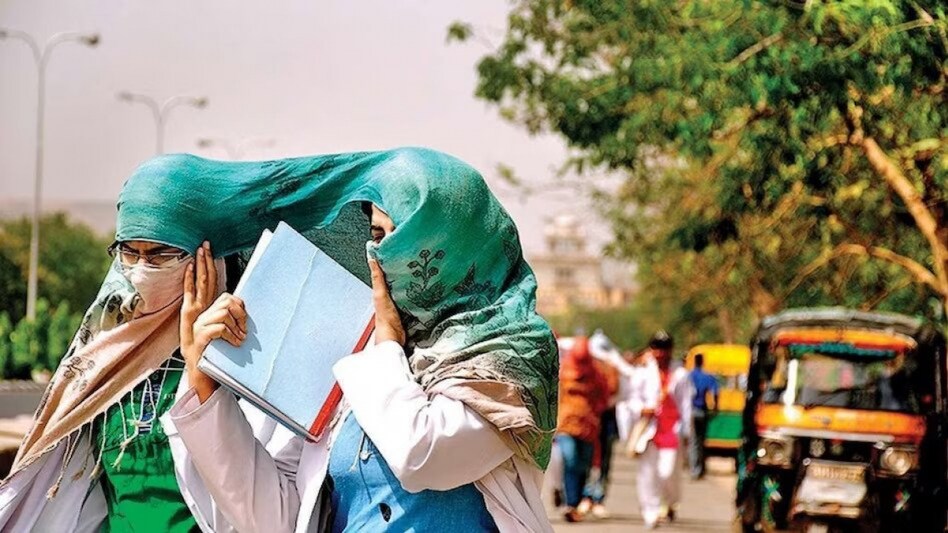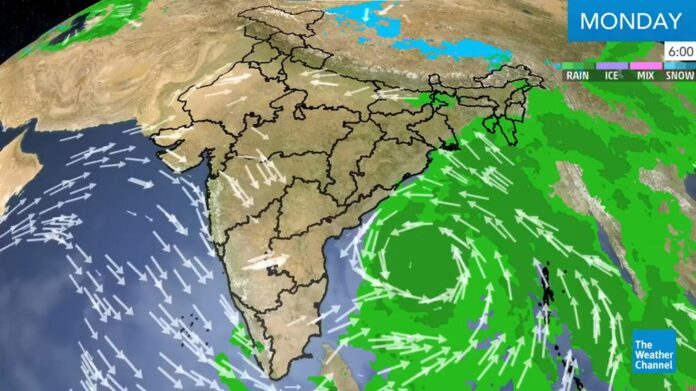IMD Forecasts Heat Wave Conditions in East India for Next 3-4 Days; Northwest India to Experience High Temperatures The India Meteorological Department (IMD) has predicted heat wave conditions in parts of East India for the next three to four days. Meanwhile, the northwest region of the country can expect temperatures ranging from 40 to 42 degrees Ce lsius over the next four to five days, although a heat wave scenario is not expected in that area, according to IMD scientist Naresh Kumar.
Currently, heat wave conditions persist in East India, including East Uttar Pradesh, and these conditions are likely to continue for the next few days. However, Kumar mentioned that there will be a reduction in weather activities in these regions following this period.
“We have issued heat wave to severe heat wave warnings for Bihar, Jharkhand, and West Bengal for the next four days. The same warning has been extended for an additional two days in the coastal Andhra Pradesh area and for the next three to four days in East Uttar Pradesh. The temperature is expected to decrease due to rainfall activity,” Kumar explained.
IMD Forecasts Heat Wave Conditions in East India and High Temperatures in Northwest India
Shifting the focus to the northeast region, Kumar stated that the area can anticipate fairly widespread to widespread rainfall, amounting to approximately 6.5 cm over the next five days.
In addition, there is a possibility of heavy rainfall over Kerala due to strong westerlies.
The IMD’s predictions provide valuable insights into the weather patterns and help people and authorities prepare for potential heat wave conditions and rainfall activity. It is crucial for individuals in the affected regions to take necessary precautions and stay informed about the changing weather conditions.
While the heat wave conditions in East India may pose challenges to the residents, the absence of a heat wave in northwest India offers some respite. Nevertheless, the high temperatures anticipated in that region emphasize the importance of staying hydrated and taking necessary measures to beat the heat.
As the weather evolves, it is essential to monitor updates from reliable sources and follow any advisories or warnings issued by the IMD and local authorities. By staying prepared and taking necessary precautions, individuals can navigate through the varying weather conditions and ensure their well-being.
The IMD’s predictions regarding heat wave conditions and high temperatures serve as a reminder of the importance of understanding and adapting to the changing climate patterns. While some regions brace for intense heat, others anticipate significant rainfall, highlighting the diverse weather dynamics across different parts of India.
Heat waves can have detrimental effects on human health, particularly for vulnerable populations. It is crucial for individuals residing in the areas affected by heat wave conditions to take necessary precautions. This includes staying indoors during the hottest hours of the day, keeping hydrated, wearing light and breathable clothing, and avoiding strenuous outdoor activities. It is also important to check on the well-being of elderly individuals, children, and those with pre-existing health conditions who are more susceptible to heat-related illnesses.
In East India, including Bihar, Jharkhand, and West Bengal, where heat wave conditions are expected, it becomes even more critical to prioritize heat safety measures. The extended heat wave warnings in coastal Andhra Pradesh and East Uttar Pradesh indicate the need for continued vigilance in these areas as well.
IMD Forecasts Heat Wave Conditions in East India and High Temperatures in Northwest India
However, relief from the scorching temperatures is anticipated as rainfall activity is expected to contribute to a reduction in temperature. Rainfall not only brings respite from the heat but also helps in replenishing water sources and supporting agricultural activities. The widespread rainfall predicted in the northeast region is a positive development that can contribute to the overall well-being of the region.
On the other hand, the possibility of heavy rainfall in Kerala due to strong westerlies should be closely monitored. While rainfall is essential for the region’s ecological balance, heavy downpours can also lead to flooding and other related issues. Local authorities and residents should be prepared to handle any such eventualities and take appropriate preventive measures.
The IMD’s role in forecasting and disseminating weather information is crucial in enabling individuals, communities, and authorities to make informed decisions and undertake necessary actions. By staying updated with the latest forecasts and adhering to the guidelines provided by the IMD, people can minimize the risks associated with extreme weather conditions.
Climate change has amplified the frequency and intensity of weather events across the globe, including India. As a result, it is becoming increasingly important to prioritize climate resilience and adaptation strategies. This includes investing in infrastructure to withstand extreme weather events, implementing sustainable agricultural practices, and raising awareness about climate change and its impacts.
In conclusion, the IMD‘s predictions regarding heat wave conditions in East India and high temperatures in northwest India highlight the need for preparedness and vigilance. By staying informed, taking necessary precautions, and adapting to the changing climate patterns, individuals can mitigate the adverse effects of extreme weather conditions and ensure their well-being and safety.

